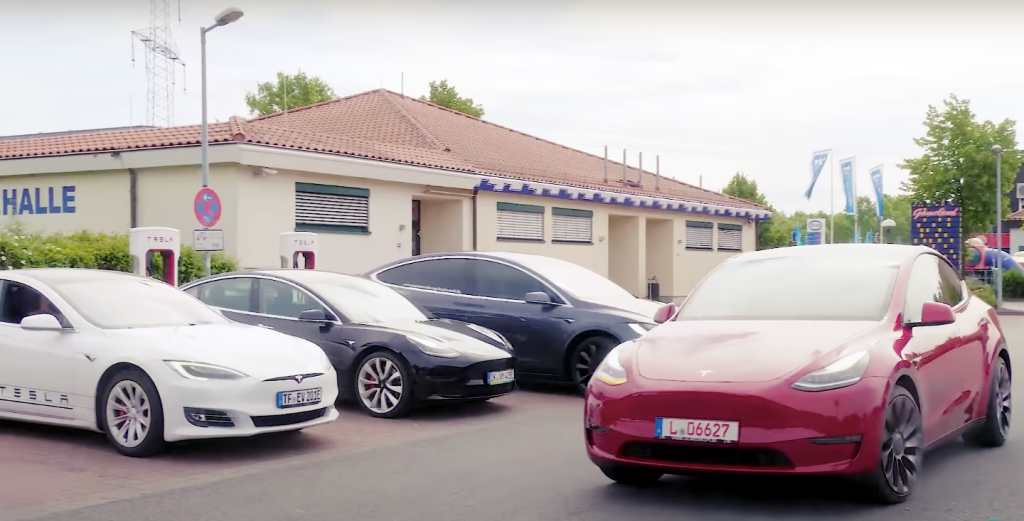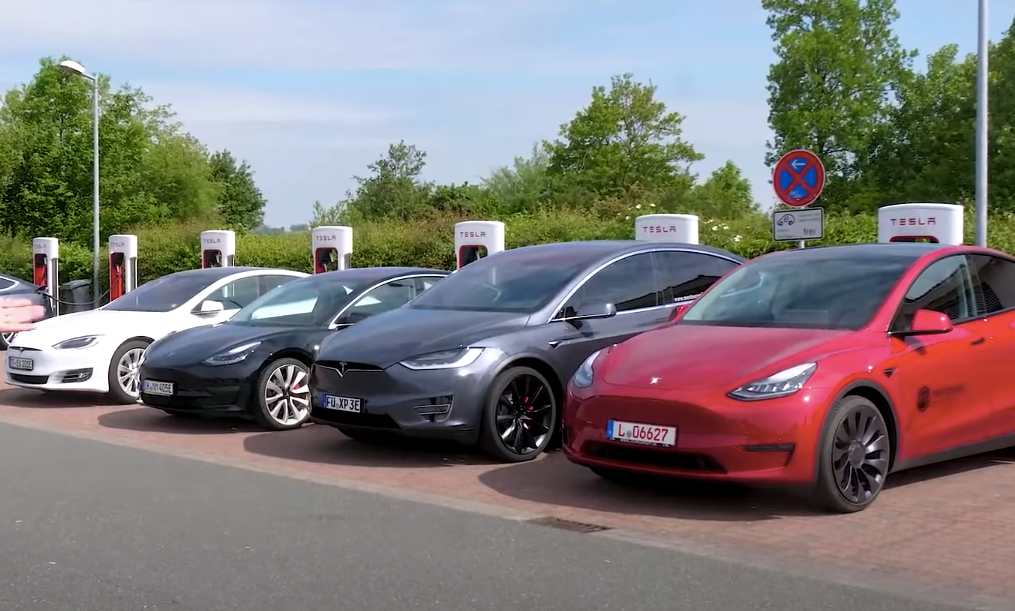Tesla Model S, 3, X, and Model Y Highway Test.
In the United States and Canadian markets, Tesla already has the S3XY family in its catalog. A denomination formed by the initials of its four models for sale, Tesla Model S, Model 3, Model X, and the new Model Y. Now the German channel Nextmove has had access to the four Tesla to put them face to face in an autonomy test at highway speed to find out which family is the most efficient.
To do this, they have made the same route, at the same time, with the four models on a German highway at a maximum speed of 130 km/h, which has remained at an average of 120 km/h at the end of the route, to know the real autonomy of each in the same circumstances. A test was carried out in optimal temperature conditions with the thermometer at 22 degrees and with the air conditioning connected and automatic.
As we see in the table below, the sedans take advantage of their better aerodynamics to achieve better results than their SUV brothers. Something that stakeholders should consider when selecting another option in the case of assessing efficiency as the main reason for purchase.
It should also be borne in mind that it is the Performance version of each unit in all four cases, which results in slightly higher consumption and, therefore, less autonomy than the “normal” versions.
Something that has to do mainly with its tires, where the most benefited is the Model S that mounts the 19-inch wheels, while the Model 3 has the 20, the Model Y the 21, and the Model X is the most handicapped from the comparison with the massive 22-inch wheels.
One of the first curiosities that we can discover in this comparison that involves driving the vehicles in a caravan, is the difference in speedometer measurement between the models. For example, with the Model Y leading the test with the score set at 130 km/h, the driver of the Model S called him surprised by the difference in speed between the two, which he assumed that despite having the system also set at 130 km/h, the Model Y was detached. Something that indicated a difference of 2 km/h between what makes the Model Y and the Model S.

At the first stop, they took the opportunity to review average consumption.
Tesla Model S: 19.6 kWh at 100 km
Tesla Model 3: 18.8 kWh at 100 km
Tesla Model X: 24.3 kWh at 100 km
Tesla Model Y: 20 kWh at 100 km
As expected, the Model 3 has been the most efficient of the four, and the veteran Model S has almost improved the figures for the new Model Y. For its part, the Model X remains very off the hook with consumption that stands at a 24% above the Model S. The price of its tires and its worst aerodynamics.
After completing the first route, the vehicles have made the return trip to compensate for the profile that could affect the figures to do it in one direction. Also, the load used in a journey has been taken into account for the measurement to avoid possible erroneous data from the vehicle computers that, as we have seen, have small deviations that can give mixed results.
To avoid this, the testers have opted for a system of leaving with the vehicles 90% charged, traveling 140 miles in total, and recording the battery capacity at the end of these tours. At the end of the test, the Model S had 49% remaining capacity, while the rest of the models had a loss between 61% and 62% of their initial charge.
The real capacity available to 90% of each vehicle has also been taken into account, which is not the same with the brand new car, such as the Model Y, than in models that have 18 or 31 thousand miles, and which may involve a small but significant difference when making a direct comparison like this one.
With all this on the table, the final data of real autonomy of these four models, estimated with the new battery in all cases, has been as follows:
Tesla Model S: 283 miles
Tesla Model 3: 248 miles
Tesla Model Y: 238 miles
Tesla Model X: 230 miles
As we see, opting for the SUV, and for striking rims, has its price in the form of consumption and therefore of autonomy that in the case of the Model X means with the same battery we will obtain 19% less autonomy than if we had opted for the sedan. At the same time, with the Model Y, the difference is much smaller, with just 10 miles or 4% less range than the sedan.
Something that puts on the table the excellent work of evolution that Tesla has done with the Model Y, which has benefited from the new architecture and new powertrains. Features that we may also see in the Model 3 manufactured in Europe from next year, which should translate into more range for the sedan when it starts to be produced at the Tesla factory in Germany.

